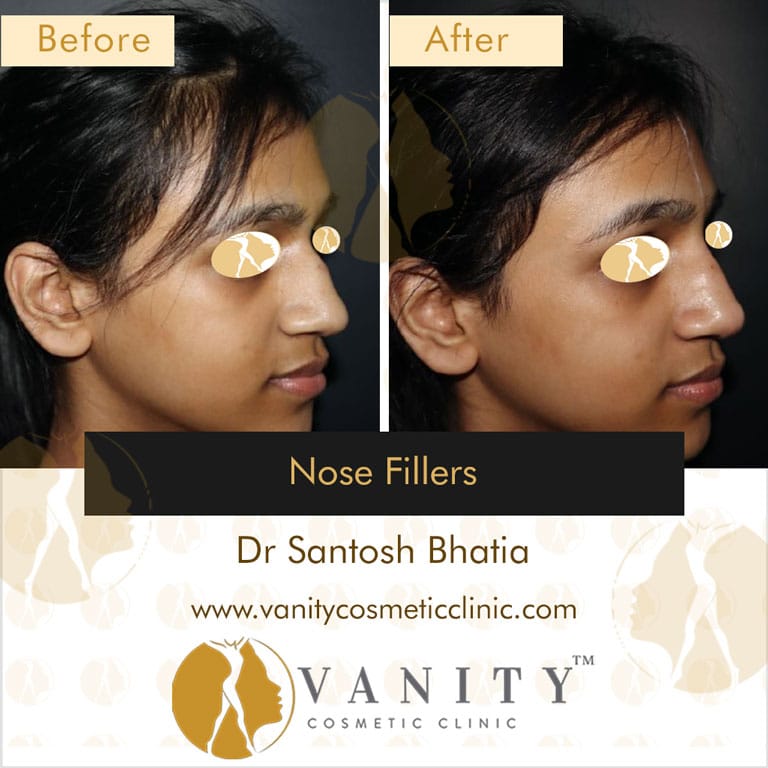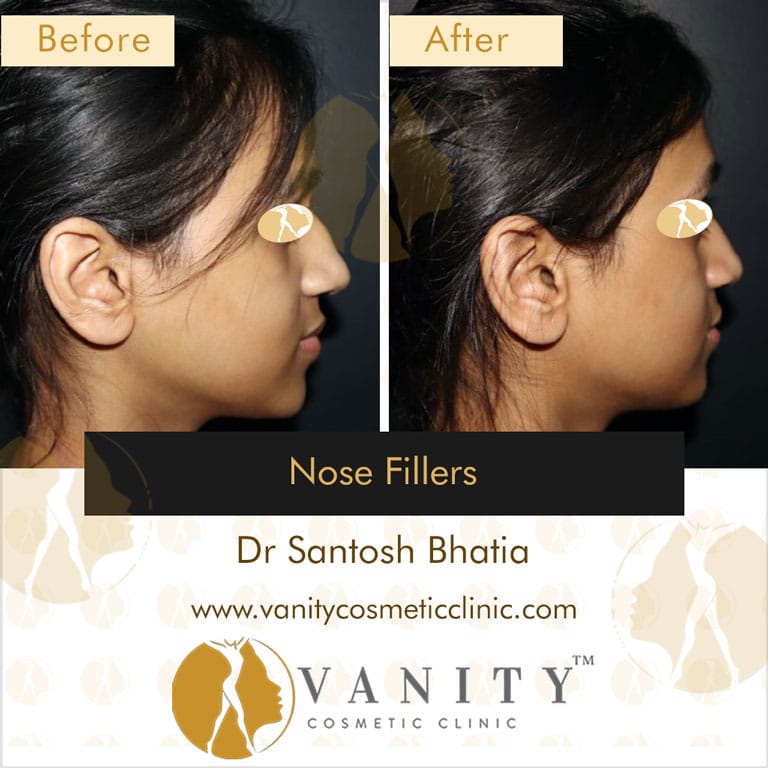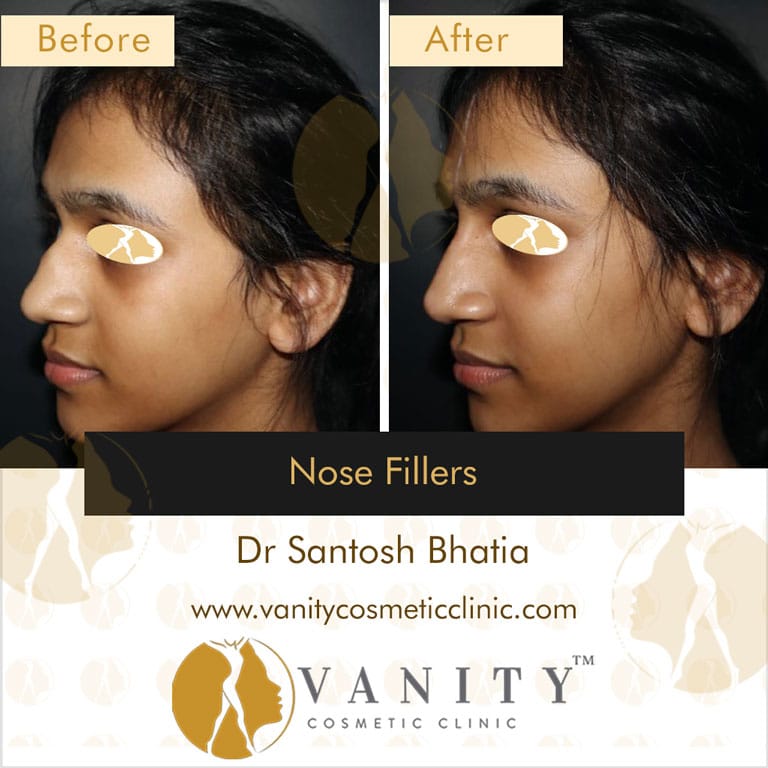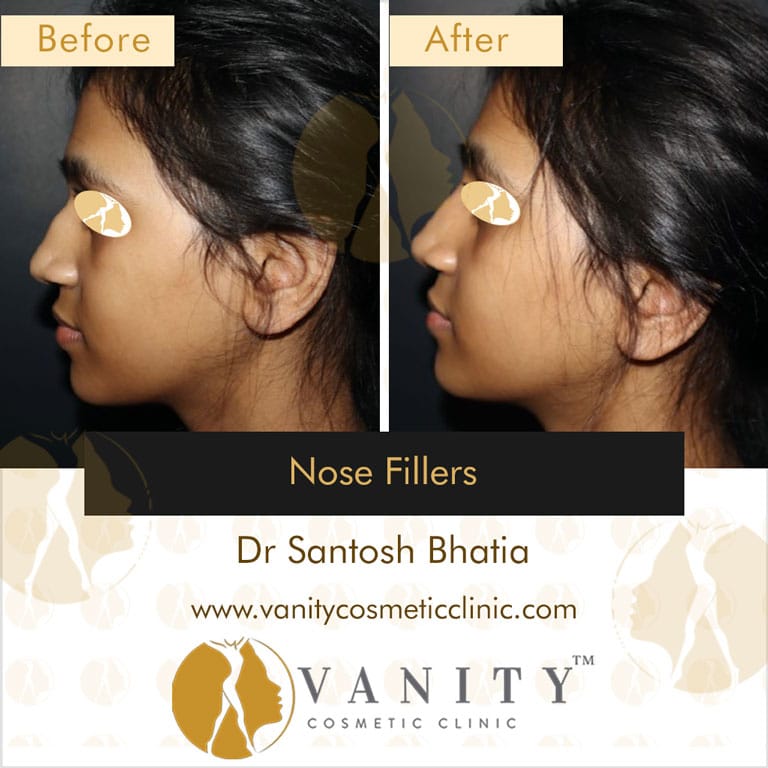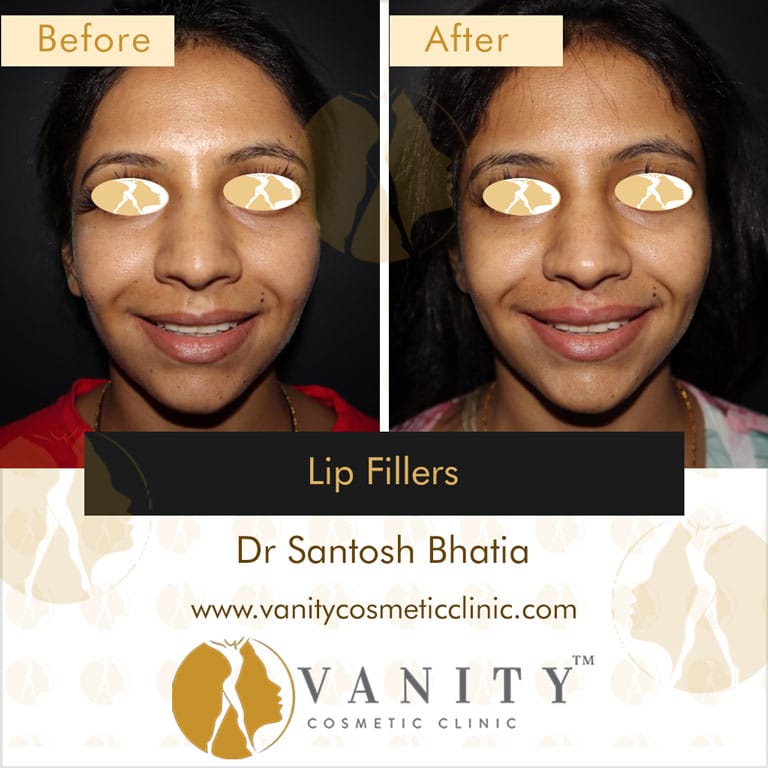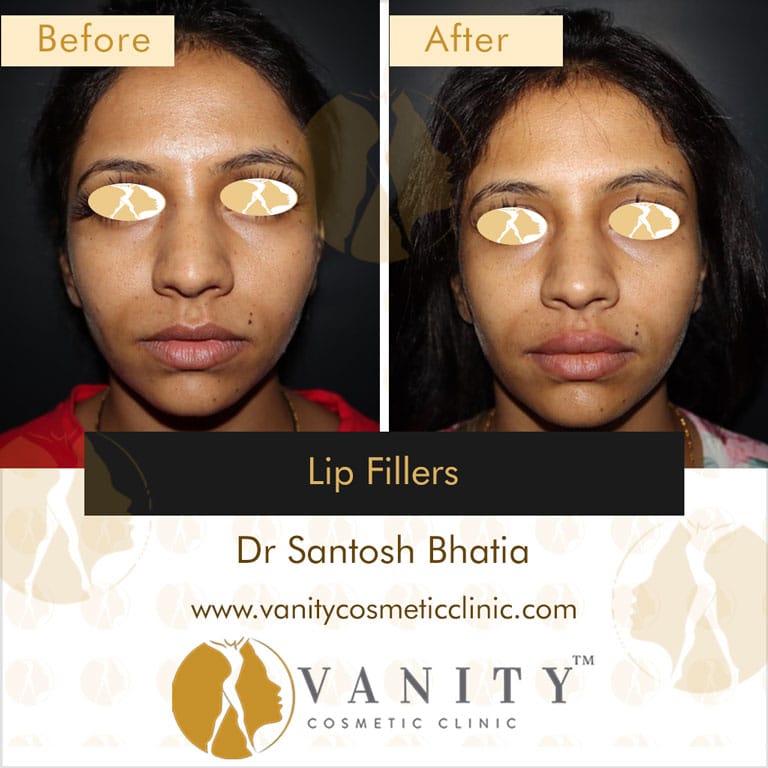Dr Santosh Bhatia, the Director of Vanity Cosmetic Clinic, Mumbai had the honour of presenting at the 5th Annual UKAAPS Meet in London on the 29th of February, 2020. This Meet was a professional conference for Aesthetic Plastic Surgeons from all over the world to interact with fellow practitioners and learn the new developments in the sphere of “Plastic and Cosmetic Surgery”.
Dr Santosh Bhatia is a Board-Certified Plastic Surgeon who has worked wonders on patients in Mumbai, New York, Toronto, London, Chicago, Miami and Pune. His practice – Vanity Cosmetic Clinic is one of the best Plastic Surgery clinics in Mumbai.
In this blog, Dr Santosh Bhatia details his talk on “Non-Surgical Facelift With The Judicious Use Of Fillers”. The blog covers the basics of how ageing affects the face, in-depth understanding of the human facial anatomy for performing a non-surgical, minimally invasive facelift and the use of fillers to perform said facelift.
Before we dive into the details of the talk, the following are the fundamentals that lay the groundwork for the blog:
What Is A Non-Surgical Facelift?
Non-Surgical Facelift is a set of treatments that are a combination of minimally invasive non-surgical procedures that give the face a rejuvenated and youthful appearance. The ultimate impact of this treatment is a younger, sharper and refreshed face.
The treatments that fall under the umbrella of Non-Surgical Facelift consist of:
- Botox
- Dermal Fillers
- Fat Injections
- Chemical Peels
All of these treatments are popular service offerings at Vanity Cosmetic Clinic. But our focus for the purpose of this blog will be only on fillers since Dr Bhatia’s UKAAPS talk revolves around it.
What Are Dermal Fillers?
Dermal fillers are gel-like substances that are injected under the skin to smoothen out wrinkles. There are different types of dermal fillers available in the market.
Dermal fillers reduce facial lines and restore the lost volume in the muscles. They make the injected area appear plump, smooth and youthful.
Now that the foundation of the talk is clear, we will shift our focus to Dr Santosh Bhatia’s invaluable insights into ageing and non-surgical facelift:
What Are The Causes Of Ageing?
Ageing is a natural process which everyone undergoes as they grow older. Ageing brings about a variety of physical and psychological changes in human beings. As people grow older they become calmer, wiser and settle into a better way of life. But physically they lose out on those firm muscles and sharp jawlines and strong bones. What causes ageing? What are the factors that transform a young body into an old one?
There are many factors that cause ageing in the human body. These factors can be classified into-
- Extrinsic Factors
- Intrinsic Factors
The extrinsic factors include natural circumstances, exposure to sunlight, pollution, smoking and even weight loss.
Intrinsic factors include the famous 5 Ds of Ageing –
- Deflation – loss of volume in the face
- Disproportion – disproportionate changes to the facial muscles (some muscles may age faster than other resulting in a disproportionate face)
- Descent – The depressors become more active than the elevators leading to an overall descent in the face.
- Deterioration – The collagen fibrils deteriorate and there is a loss of elasticity and hydration of the dermis.
- Dynamic Discord – Dynamic discord means that during the ageing process as the fat compartments in the face begin to atrophy it leads to changes in the muscles around it. The interplane between the muscles where the fat compartments are originally located moves causing dynamic discord.
Other intrinsic factors that lead to ageing are volume loss and descent in fat pads, depressors becoming more active than elevators in muscles and decrease in bone density which affects the structure of the face.
Dr Bhatia refers to Lambros’ work which says that there is selective atrophy in the deep fat compartment with hypertrophy of the superficial fat compartment combined with the depressors becoming more active than elevators.
All of these problems can be addressed by using fillers, toxins and thread lifts.
How Do Doctors Identify Facial Ageing?
Following are the cornerstones of identifying facial ageing:
- Inversion of Triangle of Youth
- Deepening of Nasolabial Fold
- Volume loss in the cheek area
- Tear Trough deformity
- Deepening of the mento labial fold
- Increased prominence of pre-jowl sulcus area
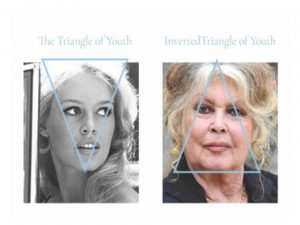
What Approach Should Plastic Surgeons Take For Non-Surgical Facelift With Fillers?
Before performing a non-surgical facelift, a plastic surgeon should take into account:
- Anatomical Considerations
- Treatment Protocol (prioritizing safety over everything else)
- MD Codes Correlation
Let us discuss these further:
Anatomical Considerations
Plastic Surgeons need to know the location and content matter of the following:
- the Preperiosteal Fat Pad
- the Deep Pyriform Space
- the Prezygomatic Space
- the Medial and Lateral SOOF Compartments
- the Deep Medial Cheek Fat Compartment
- Premaxillary Space
- the Infraorbital Fat Compartment “Malar Bag”
- the Superficial Cheek Compartments
Apart from this, the Cosmetic Surgeon also needs to take into account the facial ligaments. As the body ages, the ligaments begin to lose support due to atrophy in the deep fat compartments. Listed are the important ligaments that factor into the non-surgical facelift:
- Upper Orbicularis Retaining Ligament
- Zygomatic Cutaneous Ligament
- Lower Maxillary Retaining Ligament
- Masseteric Ligament
- Mandibular Ligament
A good surgeon will have an in-depth understanding of the facial anatomy and also how different ethnicities will have slightly different bone and muscle structures. Anatomical consideration is important because it defines the course of the treatment.
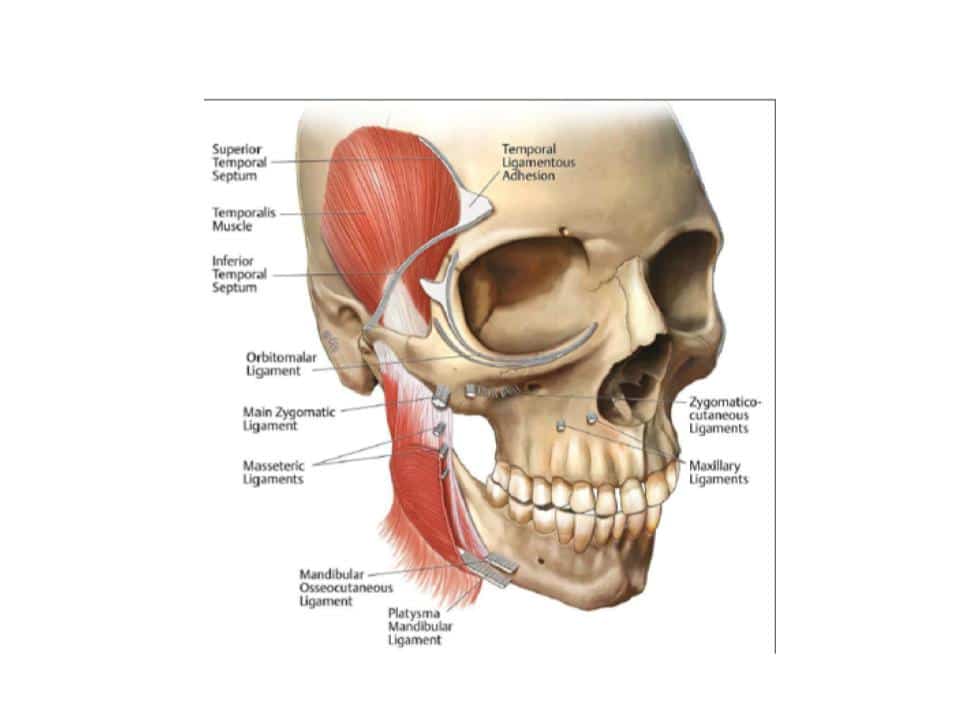
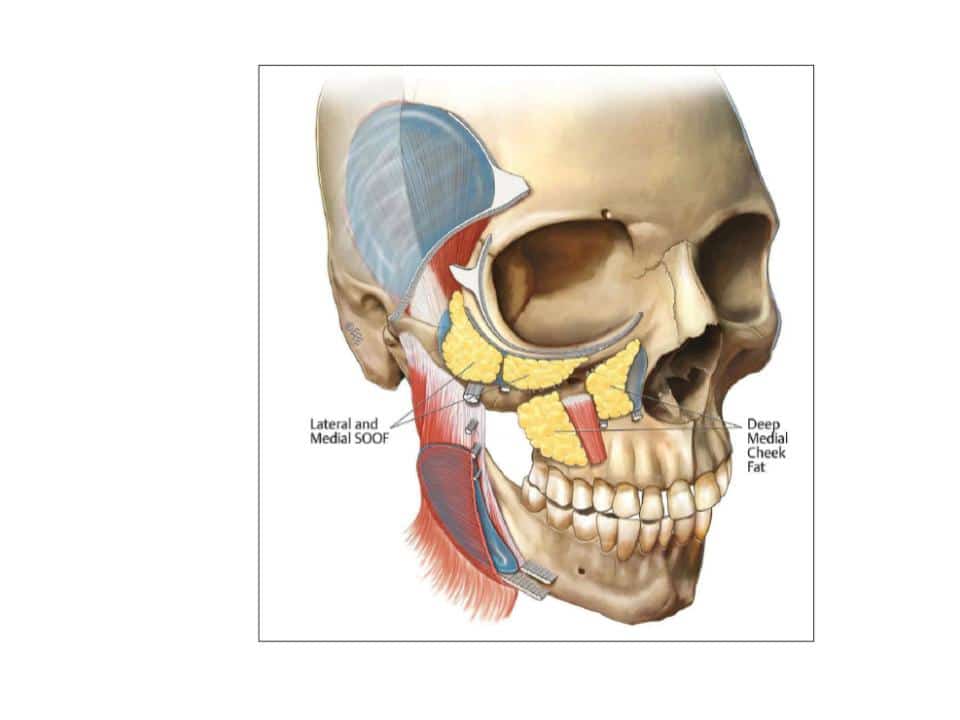
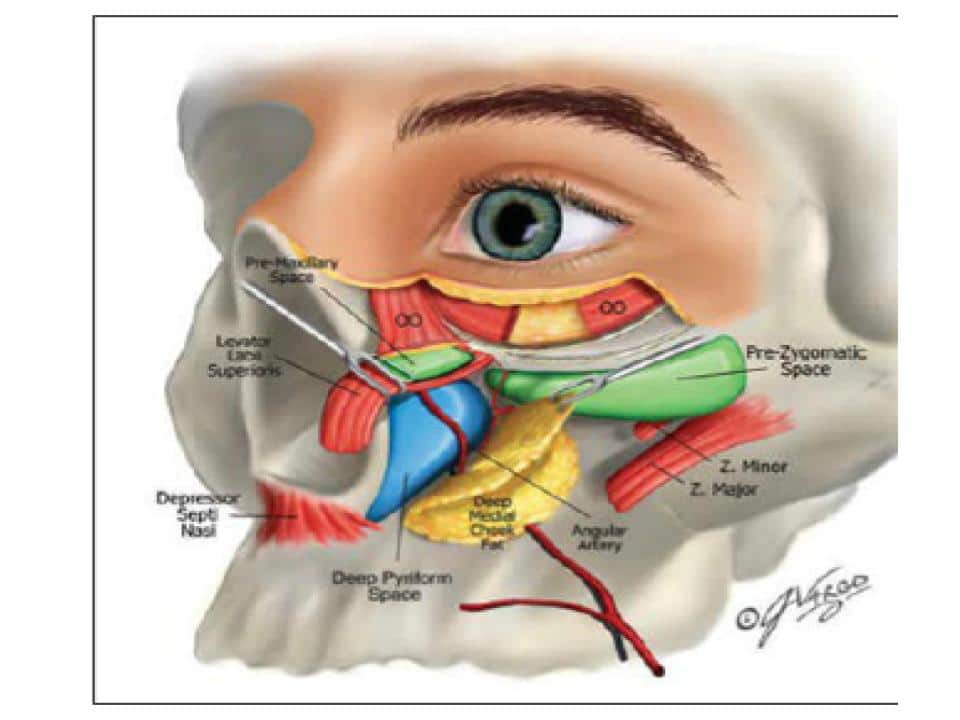
MD Codes Correlation
The MD Codes was developed by Dr de Maio in 2010. The MD Codes are a system which guides the use of injectables in medical aesthetics. According to Dr Santosh Bhatia, Vanity Cosmetic Clinic’s board-certified Plastic Surgeon, the MD Codes can be extremely helpful when moving forward with a non-surgical facelift.
Treatment Protocol
A good plastic surgeon will thoroughly follow the treatment protocol laid down by the Medical Board. He/she will take the utmost precautions in their treatment to ensure 100% patient safety. All the medicines used in the treatment will be Board Approved only and the dosage will be determined based on the needs and goals of the patient.
How To Perform Non-Surgical Facelift Using Fillers?
Fillers For Deep Volumization
The surgeon should start assessing the areas that show the most notable signs of deficiency and volume loss. Deep volumization with fillers involves using a medium to high-G prime filler in a deep compartment targeted at areas of diminished ligamentous and soft-tissue support.
One of the common mistakes pointed out by Dr Santosh Bhatia is targeting the nasojugal fold or nasolabial folds with fillers, but that gives a monkey-like look to the overall face. Hence, the approach should be similar to a surgical facelift which means go for a lateral midface volumization.
Fillers for Anterior Midface (Deep Volumization)
The technique for the effacement of tear troughs is vertical cannula injections fillers placed in a vertical stalagmite fashion via the deep pyriform or premaxillary spaces.
These are accessed through a port roughly 1.5 cm inferolateral from the alar base in the nasolabial crease.
Once these steps are performed some of the patients do not need further fillers. But in case of some patients superficial fillers may be necessary to enhance the look and contour the face.
Fillers for Lateral Mid Face (Deep Volumization)
In case of individuals showing a significant nasojugal fold or nasolabial fold, there will be a high deficiency in several areas. First, make an assessment of the lower eyelid vector. In individuals with a negative vector, the primary augmentation site will be the prezygomatic space.
An injection port 1.5 cm inferolateral to the lateral canthus is utilized. A pinch-and-pull technique with the non-injection hand facilitates cannula passage through the prezygomatic space capsule.
This capsule is analogous to the investment of SMAS on the posterior surface of the orbicularis oculi muscle. A palpable and often audible “pop” is noted when the cannula penetrates this capsule. Once in the prezygomatic space, the injector can move the cannula freely along the upper maxilla.
The prezygomatic space has roughly the shape of a Silastic cheek implant. The space extends superolateral up to the point of the lateral orbital thickening, which is the extension of the lateral canthal structures. The injector can sweep the cannula within the space to feel the caudal boundary (zygomatic cutaneous ligaments) and the cephalic boundary (ORL). Volume additions of approximately 0.6mL with fillers or fat grafting volumes of approximately 1.4 to 1.5 mL are typical in this space.
Superficial Volumization
Lateral Midface (Superficial Injection)
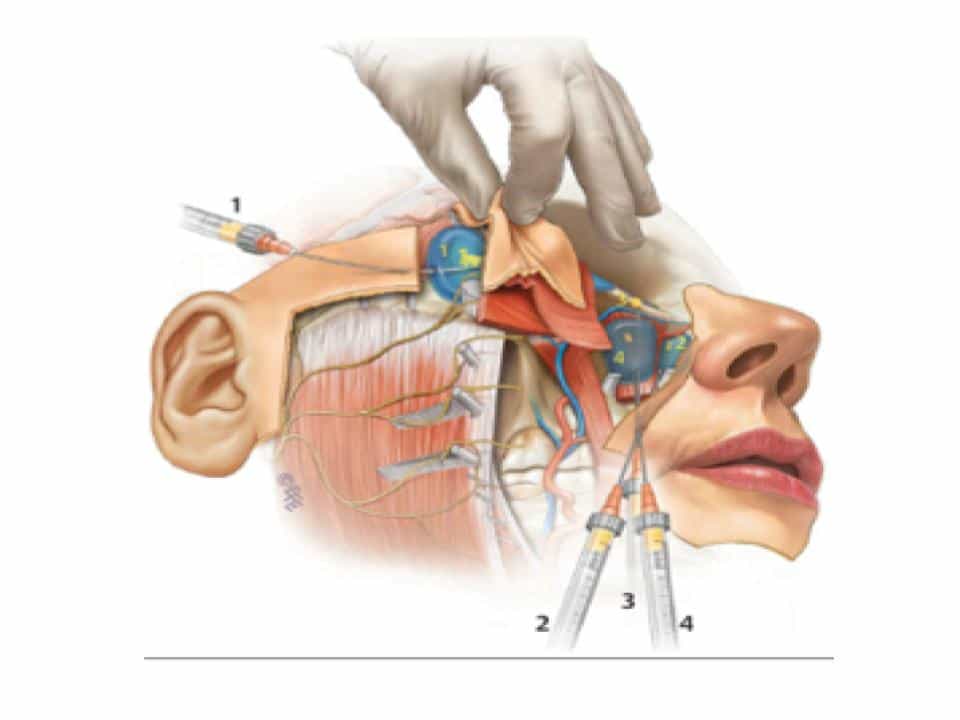
Due to the lateral limits of the prezygomatic space, volumization in the space does not address the lateral zygoma sweep. To address this, the injector can perform the DeMaio V1 injection which overlies the zygomaticotemporal suture.
A bolus injection in this location of approximately 0.25 to0.4mL will have a transmitted effect across the convexity of the cheek. Additionally, the DeMaio V2 injection is placed on the cephalic border of the main zygomatic ligament and should further enhance lateral cheek projection.
Anterior Midface (Superficial Injection)
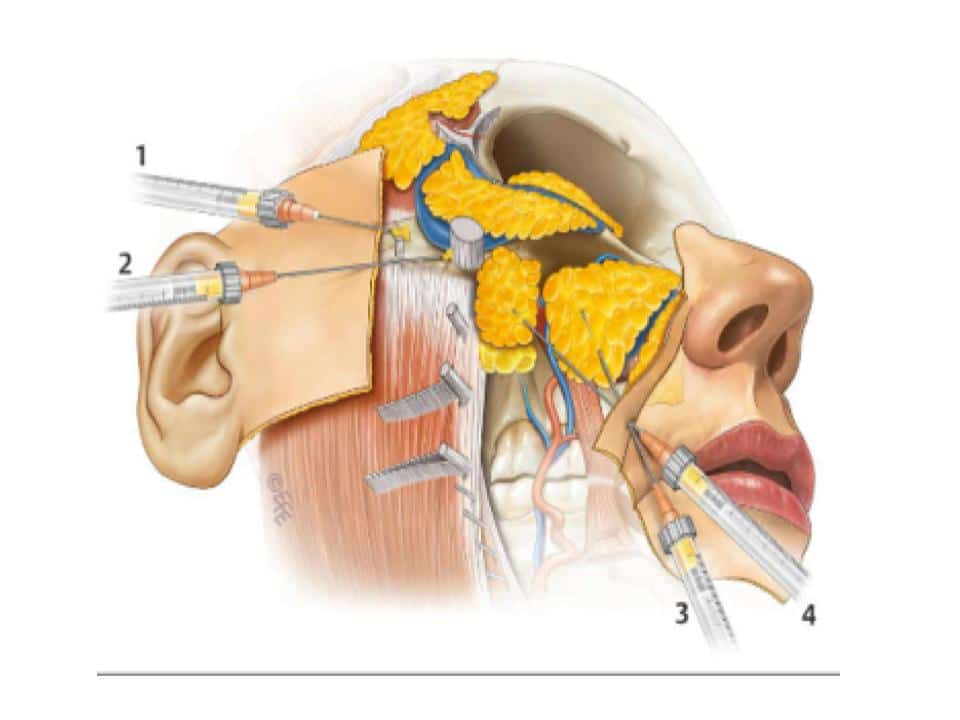
The primary targets are the superficial middle and medial fat compartments as described by Pessa et al. These are accessed through a port roughly 1.5 cm inferolateral from the alar base in the nasolabial crease.
The bounds of the superficial medial and middle compartments are readily apparent as resistance is felt when passing the cannula through the vascularized septae that divide them. The injector can fan broadly across these compartments to blend them, restoring volume and contour.
Other parts of the face where fillers may be injected as part of the non-surgical facelift:
- The jawline
- The chin
- The cheeks
- The temple
- The tear trough
- The lips
- The nasolabial reshape
- The marionette reshape
All of the above-mentioned areas are effectively areas where the doctor reshapes the features to look more youthful and firm.
Where Should Fillers Not Be Injected?
The MD Codes are a clear guideline which states what quantity of fillers to use, where to inject and at how much depth should doctors inject. They also demarcate “no-go” zones or areas where no fillers should be injected at all or done with caution.
These areas are important because the face is a web of arteries, muscles and vessels which are an integral part of the nervous system and sensory system. Any damage to these units will damage a bigger system.
A good plastic surgeon should refrain from using fillers in the following areas:
Dr Santosh Bhatia warns that the biggest risk when injecting fillers is causing blindness to the patient. This is a very serious risk and hence doctors should take all possible measures to avoid it completely.
Dr Santosh Bhatia’s Tips For Injecting Fillers Perfectly:
- Perform needle aspiration before injecting fillers
- Prime the needle before injecting
- Inject slowly, never rush the fillers into the body
- Keep communicating with the patient to note the level of discomfort or pain
- Frequently check for skin colour changes
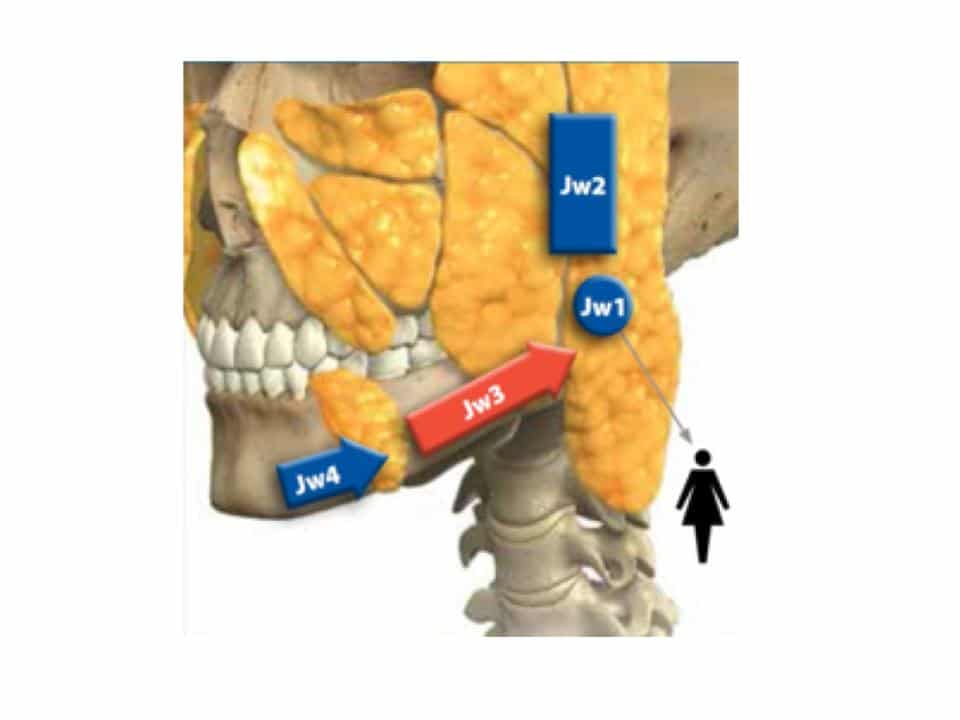
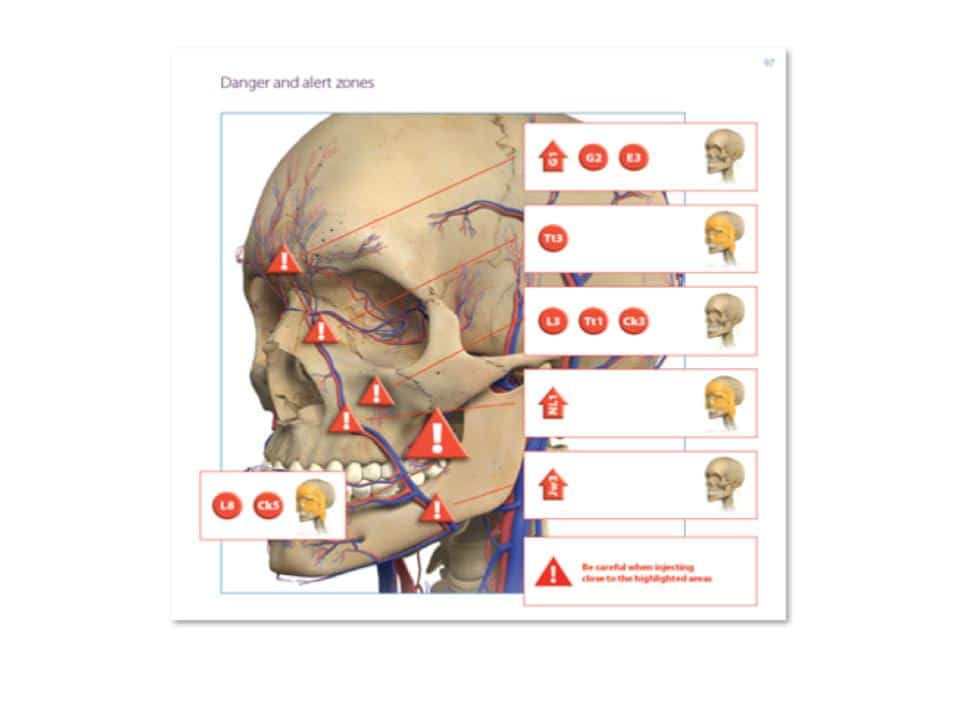
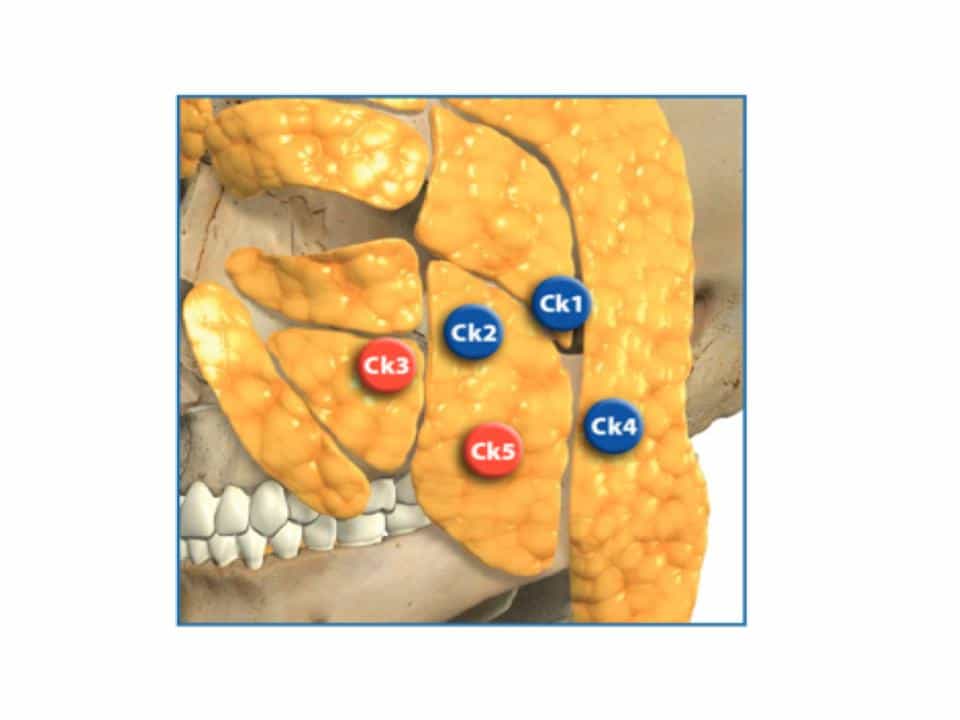
Conclusion
Dr Santosh Bhatia has suggested that plastic surgeons should take an aesthetic approach when performing a non-surgical facelift using fillers. The aim should be to give results similar to a surgical facelift while minimizing the downtime and invasiveness of the procedure. They should keep in mind to never inject a filler only in one part of the face since it looks disproportionate and unnatural to the rest of the face. Fillers should be injected in such a manner that the entire face looks volumized and younger.
Thank you for reading this blog.
In case of queries please get in touch with Dr Santosh Bhatia via [email protected]
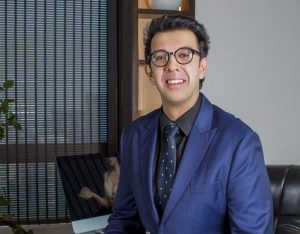
Dr.Santosh Bhatia
Dr Santosh Bhatia is one of Mumbai’s most-sought-after Plastic Surgeons. He is a Board-certified Cosmetic Surgeon who is the founder of Vanity Cosmetic Clinic, Mumbai. Dr Santosh Bhatia is associated with some of the best hospitals including Kokilaben Dhirubhai Ambani Hospital and Breach Candy Hospital.
